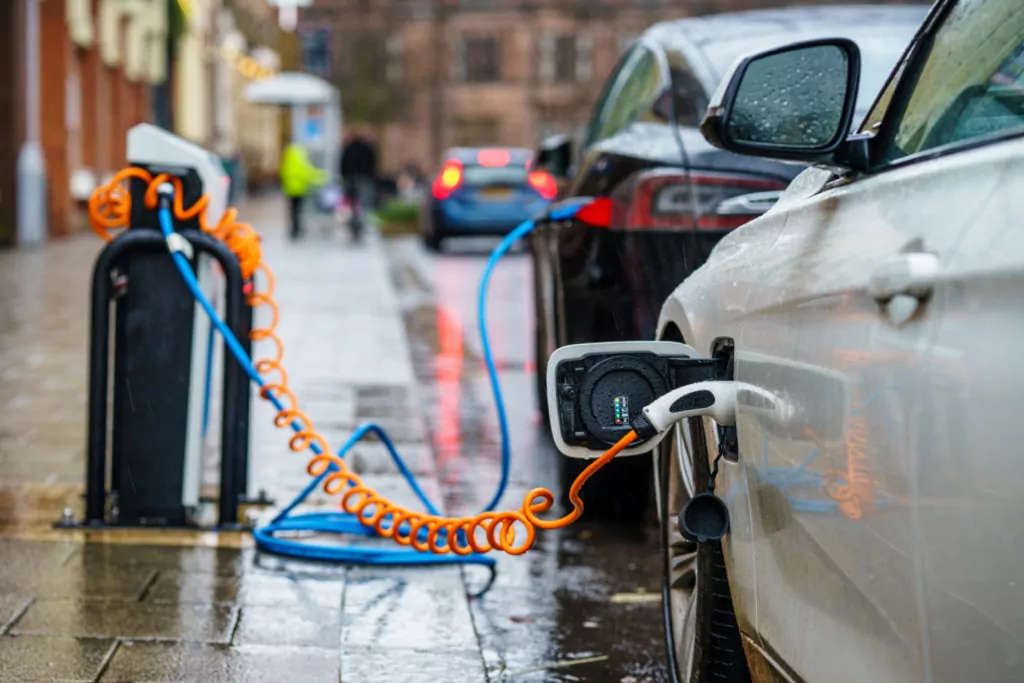
An interview with Jeremy Yapp, BEAMA. Future proofing EV charging infrastructure.

At a time when operational business is slowing, implementing a zero or low-emissions mobility strategy remains a core task for many businesses. The industry is rightly focused on future proofing and making investment decisions for Electric Vehicle charging infrastructure that will stand the test of time. This is a hugely positive approach as we try and create a cohesive and robust strategy for implementing infrastructure in the UK. We are seeing more and more businesses seeking support for their procurement strategy to ensure they approach the task with the future in mind.
Having recently contributed to BEAMA's 'Best Practice for Future Proofing Electric Vehicle Infrastructure' report, we spoke to Jeremy Yapp, Head of Flexible Energy Systems at BEAMA, to find out more about what he sees as being the main areas of focus when it comes to future proofing infrastructure.
How should decision makers and fleet managers approach investment decisions for EV charging infrastructure?
Investing in public EV charging infrastructure is complex, and approaches that work well in one area may not work at all elsewhere. What we have tried to do in our report is identify the key principles that manufacturers, planners, asset owners, installers and operators should consider at every stage of the asset’s life to avoid stranded assets.
These principles fall into three broad categories:
- Resilience. Including adaptability and product interoperability.
- Suitability. Including planning, placement and installation.
- Connectivity. Including smart charging and data security.
If decision makers focus on maximising the value and longevity of their assets, there will be less waste, less risk and ultimately less cost. This will make for a more efficient infrastructure rollout, with a better consumer experience, and more market and consumer confidence in the emerging devices and services.

How are data security concerns being approached?
As the market grows and offerings to consumers become more complex, assurances need to be given on how consumer data is gathered, stored and protected. Consumer rights should be placed at the centre of this discussion, but we also need to recognise that when data is handled securely and appropriately, the vast growth in data doesn’t have to be detrimental to consumers.
How will Smart Charging benefit the end user and the operator and what should be considered?
Smart Charging will be hugely advantageous to the consumer and the operator. As the EV Energy Taskforce recommends, charge points should follow technical requirements and specifications that allow them to be reliably operated in smart mode. Smart charge points must be interoperable with a range of systems and able to respond to signals from a charge point operator (reflecting local DSO constraints), aggregator, energy supplier or other intermediate party.
Organisations will need to think carefully about how they expect the ‘smartness’ to be used, how and why those use patterns might change, and what these issues mean for procurement, placement and management. If this advice is followed, the end user can experience competitive pricing and the operator can better manage the charging demands on their network.
Future-proofed infrastructure is likely to be modular and designed to meet complex and variable customer needs that will change over time in unpredictable ways.
What do businesses looking to roll out charging infrastructure need to consider from a procurement perspective?
This document seeks to help you understand the elements you should consider in your procurement frameworks, but it is not a prescriptive guide for the good reason that there is a lot of innovation in this area, which should be encouraged.
In summary, what does future-proofed EV charging infrastructure look like?
Future-proofed infrastructure is likely to be modular and designed to meet complex and variable customer needs that will change over time in unpredictable ways. It is necessary but not sufficient to identify customer ‘segments’ and design products to meet those different needs.
It will be resilient by virtue of being adaptable to changing needs and being interoperable with other parts of the charging system. It will be planned, deployed, installed and operated in ways that enable it to serve multiple users effectively and efficiently. And, where necessary, it will be part of a smart system the contributes to the flexibility and resilience of the electricity grid and manages consumer data in a way that improves the customer experience of charging – and thus improves public confidence in the electrification of road transport. Every business will need to develop its own strategy while considering the best practice elements which we explore in our report.
If you would like any guidance on how to approach planning, policy and implementation of a mobility strategy in your organisation please get in touch with our Mobility Team contacts below.
If you would like to find out more about the report contact [email protected]












